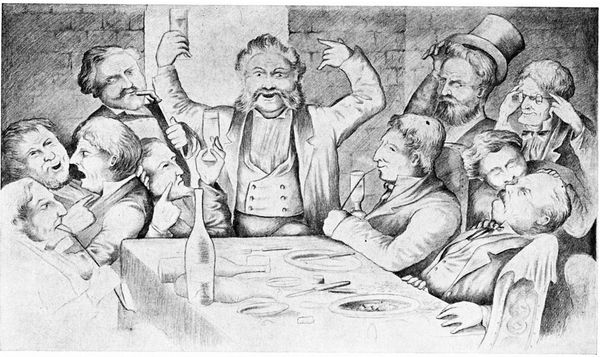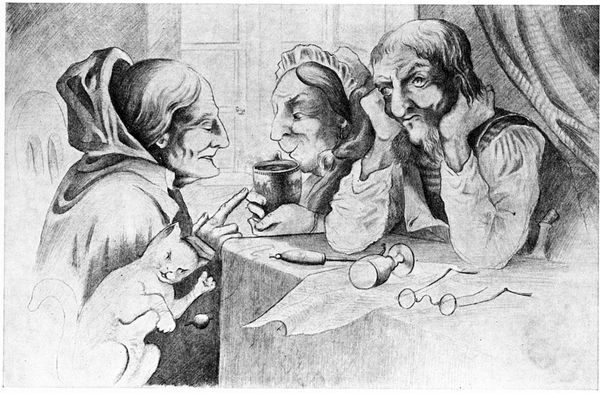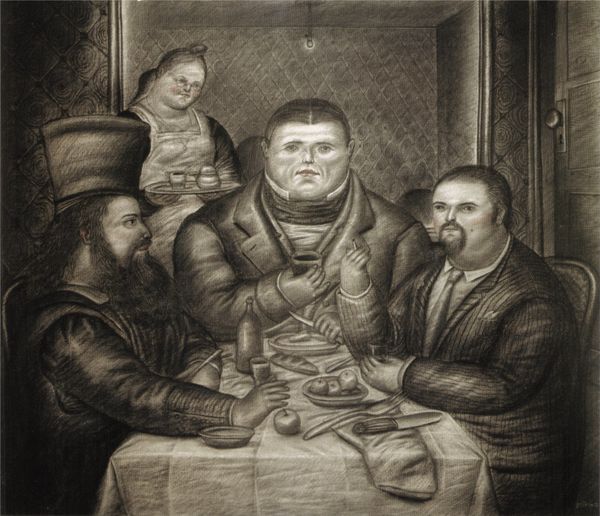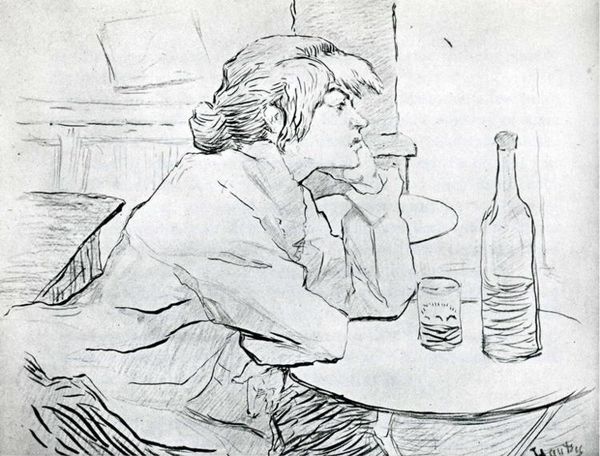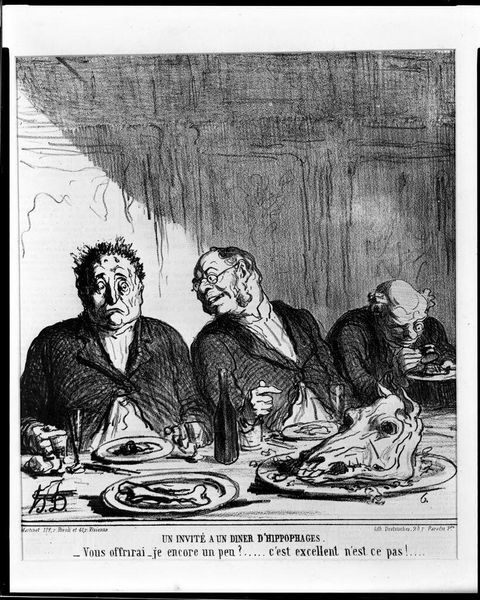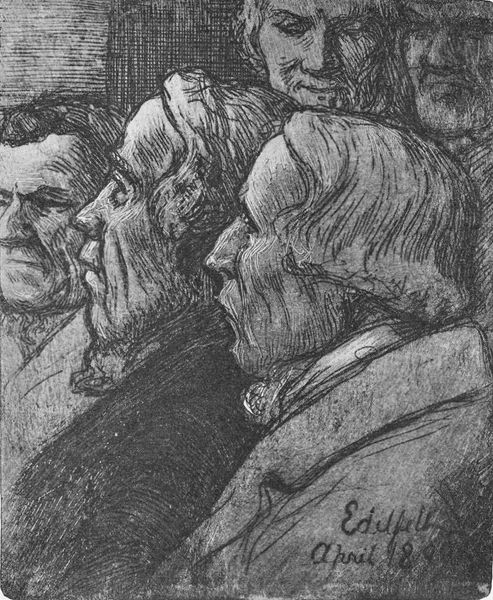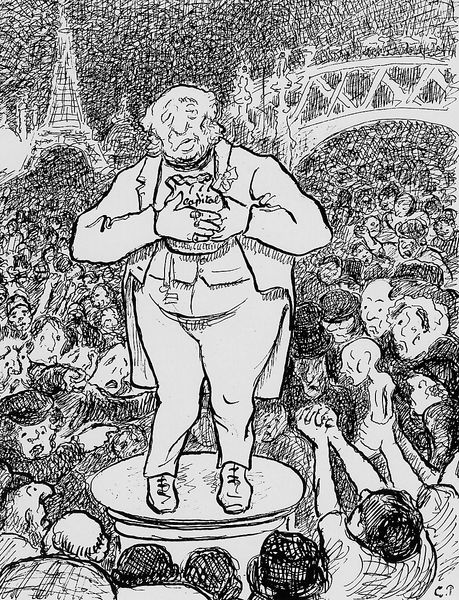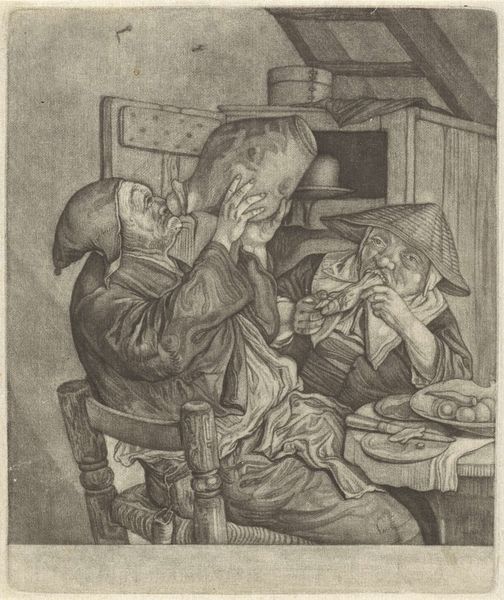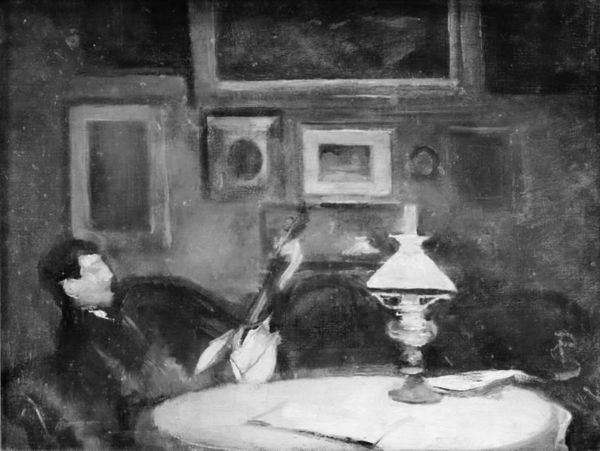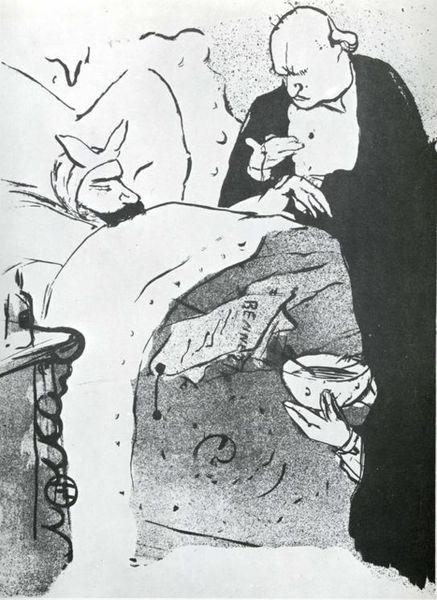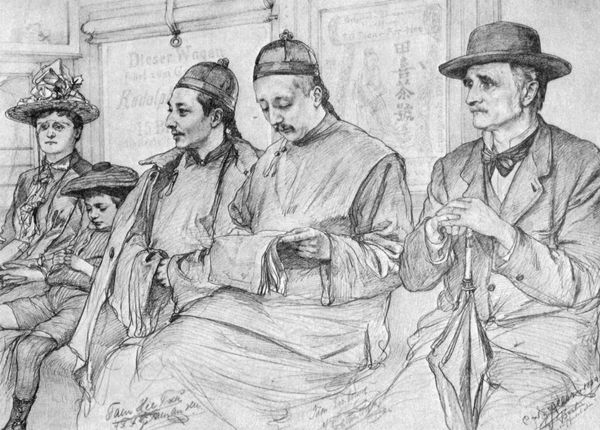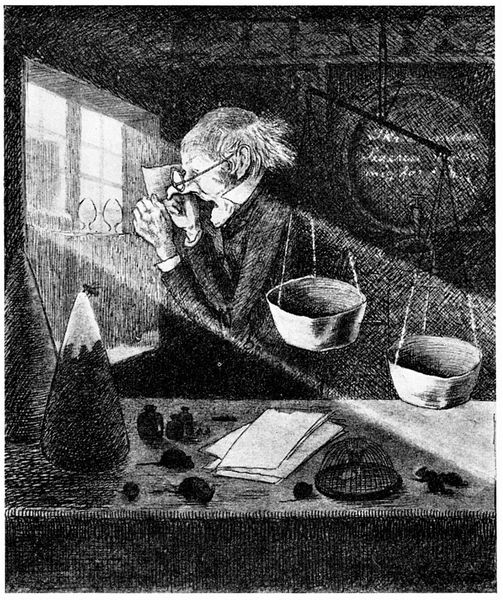
drawing, paper, ink
#
portrait
#
drawing
#
paper
#
ink
#
genre-painting
Copyright: Public domain
Editor: This is an untitled drawing by Theodor Severin Kittelsen. It appears to be an ink drawing on paper, portraying three men in what looks like a tavern. I’m struck by the detail of the textures, the heavy beards, the wood grain of the barrels in the background... What do you make of this piece? Curator: It's fascinating to consider the materiality. Ink, readily available and cheap, allowed for wider distribution, a democratization of art. Note the roughness of the paper itself; it wasn’t luxury stock. Think about who would consume such an image and where it might be displayed. Was it for a wealthy patron or printed for the masses? Editor: That’s interesting, I hadn’t considered the type of paper. Does the composition speak to this potential audience as well? The men are huddled closely, reading something together. Curator: Precisely! The figures are grounded, relatable. This wasn't created with the high ideals of the academy in mind. It acknowledges and almost celebrates everyday life. The scene, although simple, might highlight working-class social life, their modes of production, and consumption. We have the very material reminders that help make production happen, like corkscrews and bottle. Why depict such details so diligently? Editor: So, the artist's choices of subject, materials, and method serve to blur lines between “high” art and working-class representation? The choice to depict a drinking scene seems intentional, highlighting everyday life instead of idealized depictions? Curator: Exactly. It provokes us to reconsider our inherited value judgments regarding art. We must consider the social meaning inherent in something as basic as paper and ink. Editor: I see. Viewing this piece from the standpoint of materials and their social context really transforms how I appreciate it. It isn’t just a genre painting. Curator: Indeed, questioning the means and mode of production opens doors to deeper understandings of social history and challenges established boundaries in art appreciation.
Comments
No comments
Be the first to comment and join the conversation on the ultimate creative platform.
